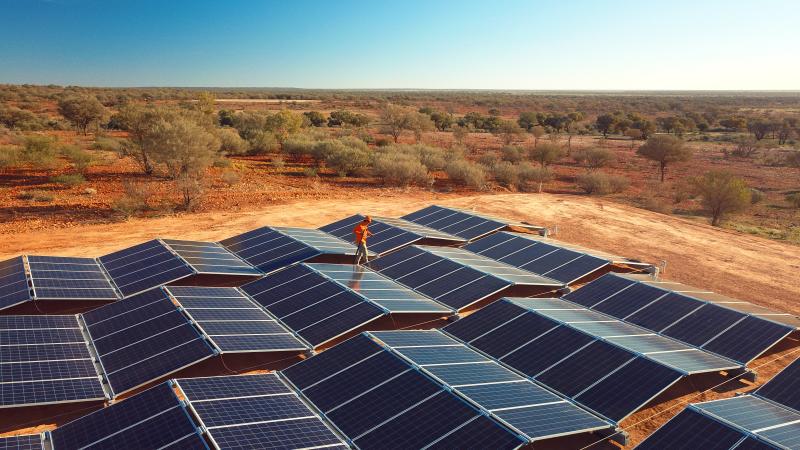
The Northern Territory government in Australia has proposed developing an AU$400 million (US$259 million) renewable energy hub featuring six solar PV power plants in the region.
Revealed by the Territory’s deputy chief minister for renewables, Gerard Maley, yesterday (13 November), public feedback is being sought on the Darwin Renewable Energy Hub.
Unlock unlimited access for 12 whole months of distinctive global analysis
Photovoltaics International is now included.
- Regular insight and analysis of the industry’s biggest developments
- In-depth interviews with the industry’s leading figures
- Unlimited digital access to the PV Tech Power journal catalogue
- Unlimited digital access to the Photovoltaics International journal catalogue
- Access to more than 1,000 technical papers
- Discounts on Solar Media’s portfolio of events, in-person and virtual
The hub involves the co-location of up to six large-scale solar farms, capable of generating 180-210MW of renewable energy, alongside a battery energy storage system (BESS), on a single site near existing network infrastructure. The size of the BESS has not been disclosed.
The hub’s development is expected to last from 2025 to 2030, subject to a final investment decision on the project. It will be located on 940 hectares of Crown Land about 19km south of Palmerston and 4km north of Berry Springs.
The Northern Territory does not have a single interconnected electricity transmission network. It is not connected to the National Electricity Market (NEM), which spans Queensland, New South Wales, Victoria, South Australia, ACT, and Tasmania. Instead, it has three regulated networks: the Darwin-Katherine interconnected system, the Alice Springs power system, and the Tennant Creek power system.
Maley confirmed that the hub would connect directly to the Darwin-Katherine grid, which is set to play an integral role in achieving the Territory’s 50% renewable energy target by 2030.
Maley also outlined that the project would boost the local economy over its operating life, creating around 500 jobs during construction and operation, including long-term sustainable jobs.
“A key priority of the government is economic development through job creation, and this project represents a considerable injection into the Territory’s economy. It is expected to generate over AU$400 million in local supply chain spending during construction and large-scale private investment in generation and energy storage,” Maley said.
“It is great for the economy and great for the environment, but the Darwin REH will also enable enhanced energy security and grid resilience, as well as place downward pressure on electricity bills.”
Solar PV in the Northern Territory
Several large-scale solar PV developments are being progressed in the Northern Territory. Perhaps one of the most significant is renewable energy developer Sun Cable’s Australia-Asia PowerLink (AAPowerLink) interconnector.
The AAPowerLink project is set to deploy between 17GW and 20GW of solar capacity and between 36.42GWh and 42GWh of energy storage to connect Australia’s Northern Territory with Singapore via 4,300km of subsea cable and supply power to the territory’s capital, Darwin, and the surrounding region.
It recently received approval from the Northern Territory government and NT Environment Protection Authority.
Elsewhere, British-Australian multinational mining company Rio Tinto announced earlier this year that it would develop two 5.25MW solar PV power plants in the Gove Peninsula.
The solar PV power plants will be developed in Gumatj and Rirratjingu country, both Aboriginal communities, on Rio Tinto leases. This is following agreements with the Gumatj and Rirratjingu Traditional Owner Groups.







